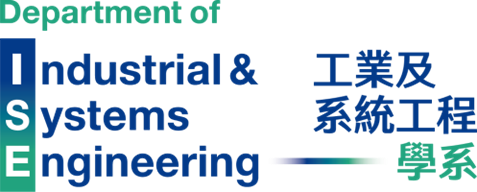Materials and Surface Technology as Key for Engineering Sustainable Products
Distinguished Research Seminar Series

-
Date
11 Dec 2023
-
Organiser
Department of Industrial and Systems Engineering, PolyU
-
Time
10:30 - 12:00
-
Venue
DE308
Speaker
Prof. Dr.-Ing. Tim Hosenfeldt
Summary
For a sustainable and CO2-neutral energy mobility ecosystem material innovations are key to fulfil the increased product requirements over the entire product life cycle.
By using renewable energy, it is possible to reduce the CO2-footprint of materials being used in terms of sustainability. In addition, it is important to make products as energy efficient as possible during the use phase in order to reduce energy consumption and thus CO2 emissions as much as possible. For this purpose, a holistic view on materials over the entire life cycle is target-oriented in order to design products in the best possible way for applications in motion and mobility [1].
In dependence of the vehicle weight or driving distance, there are several ideas for future mobility. Next to the direct use of electrical energy for battery electric vehicles, a second possibility comprises the conversion of regeneratively generated electricity into green hydrogen as an energy carrier for fuel cell electric vehicles [1]. Defossilization of the energy chain requires increased industrialization of components for electrolyzers and metallic bipolar plates, strategic components of fuel cells [2,3].
For all concepts the selected materials need to stand in a balance of efficiency, costs, availability, and sustainability. The material requirements for solid, liquid and gaseous materials will increase and an optimal material-product and production co-design is essential to achieve the best efficiency along the whole life cycle from cradle to gate over the use phase to grave to cradle.
In this context, the reduction of the amount of material and the possibilities of lightweight design, the reduction of the material-related CO2 footprint, the possibilities of the circular economy under consideration of the R-strategies from re-use to re-cycling as well as the increase of energy efficiency and reduction of CO2 emissions in the use phase are considered.
Especially for precious materials and alloying elements with a high cost and CO2-footprint, an efficient use of these materials must be achieved for structural materials and for functional materials. Exemplarily, while electrochemical cells need to be corrosion protected, electrically conductive and mechanically stable, the CO2-footprint and costs could be significantly decreased by reducing the precious metal share and the alloying elements of the metallic bipolar plates. The substrate material is responsible for the largest share of the CO2-footprint and an optimized material selection allows a reduction of 50 %, whereby it becomes increasingly important to understand the impact of unfavored alloying elements due to scrap-based steel on the steel quality. This shows that material quality and CO2-footprint must be considered together in future. Material Technology and Surface Technology will continue to be a key technologies for a sustainable and CO2-neutral mobility regardless of the powertrain concept.
Reference
[1] T. Hosenfeldt, Plasma Processes Polym. (2022) e2200014.
[2] Hydrogen Council. Hydrogen scaling up: a sustainable pathway for the global energy transition. (2017).
[3] European Commission. Energy Roadmap 2050. (2012).
Keynote Speaker

Prof. Dr.-Ing. Tim Hosenfeldt
Senior Vice President,
Central Technologies, SCHAEFFLER AG
Herzogenaurach, Germany.
Prof. Dr.-Ing. Tim Hosenfeldt is Senior Vice President Central Technologies at the Schaeffler AG, Herzogenaurach, Germany, and is responsible for the Material-, Surface- and Chemical Technologies as well as for sustainable products and advanced materials at Schaeffler. He studied Mechanical and Process Engineering at the University of Bremen and continued his career at research engineer at the Leibniz-Institute for Material-Oriented Technologies – IWT in Bremen in the field of Material Science and Surface Technology. After his Ph.D at the University of Bremen in the year 2000 he joined the Schaeffler Group, where he built up the Coating- and Surface Technology from research to world-wide production and was Head of for Corporate Innovation. Tim Hosenfeldt has held a lectureship in "Materials and Surfaces in Product Design" since 2008 and was appointed honorary professor in 2016 at the Friedrich-Alexander-Universität Erlangen-Nürnberg in the faculty of construction engineering. Besides, he is member of various councils and committees of research institutions and societies. He is involved in the Association of German Chambers of Commerce and Industry Committee “Industry and Research” as industry representative for the metropolitan region Nuremberg and Middle Franconia and in the VDMA committee “Research and Innovation”. Furthermore, Tim Hosenfeldt is member in the Executive Board of the Society for Tribology (GfT) e.V. and in the Board of Trustees of the Fraunhofer Society as well as Chairman of the Industry Advisory Board of the Leibniz Institute for Material-Oriented Technologies. Professor Hosenfeldt can be contacted via Tim.Hosenfeldt@schaeffler.com.
You may also like














